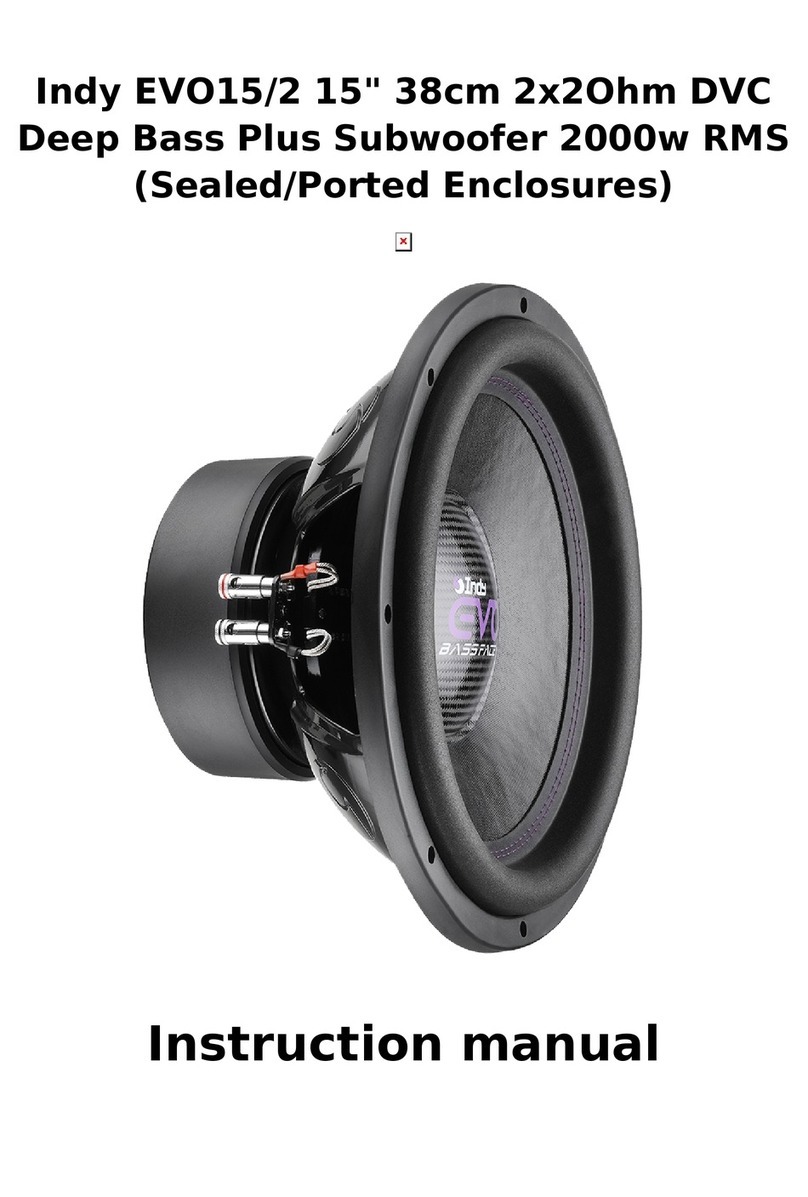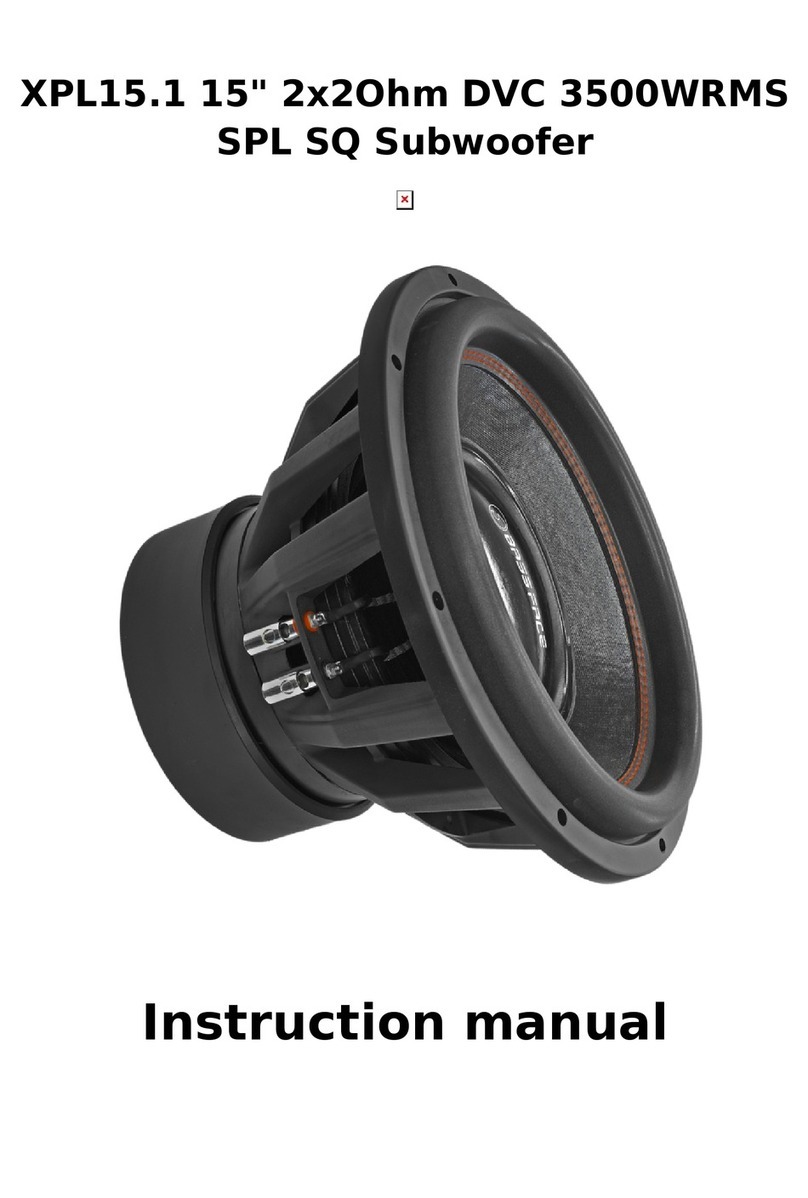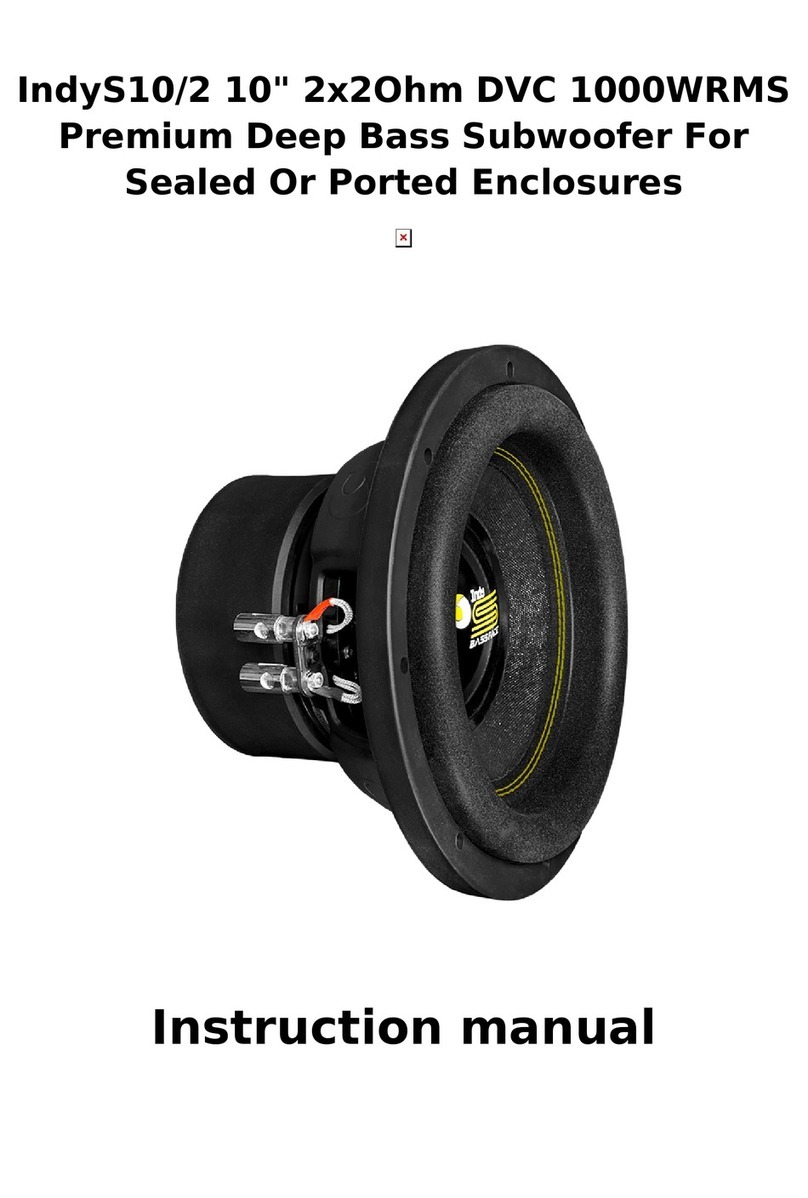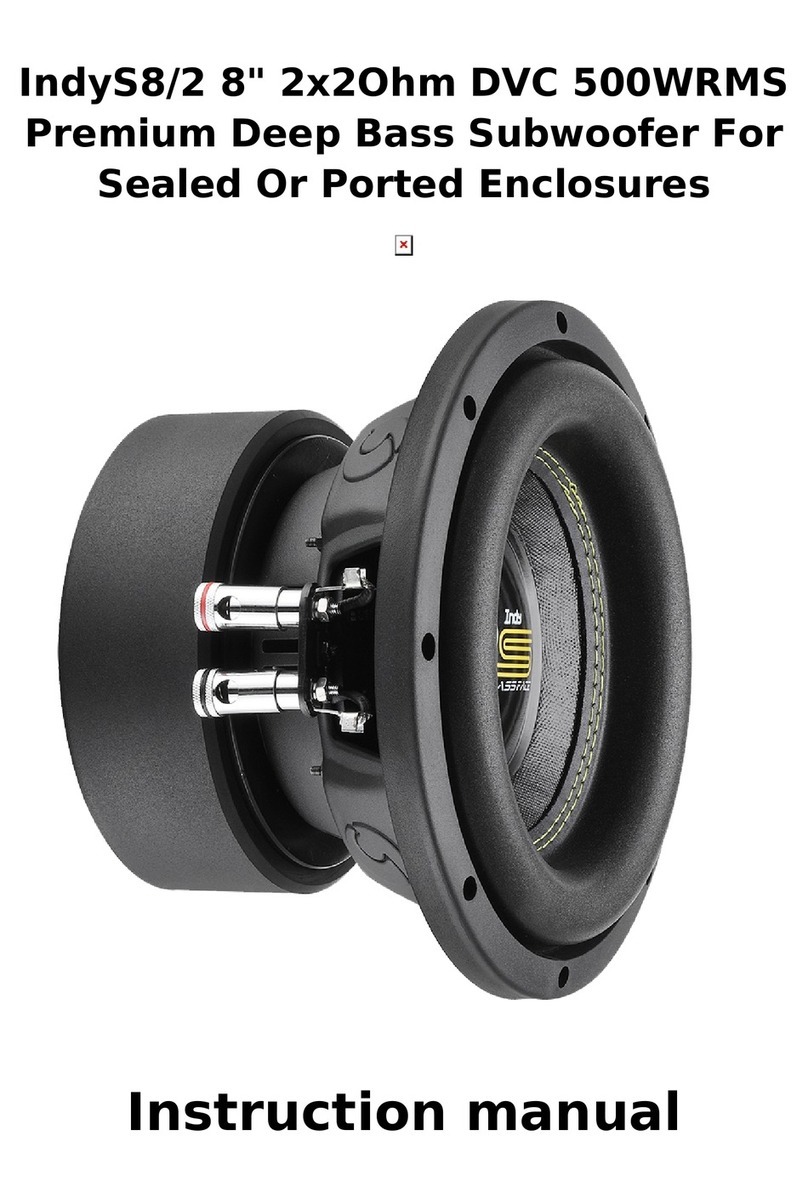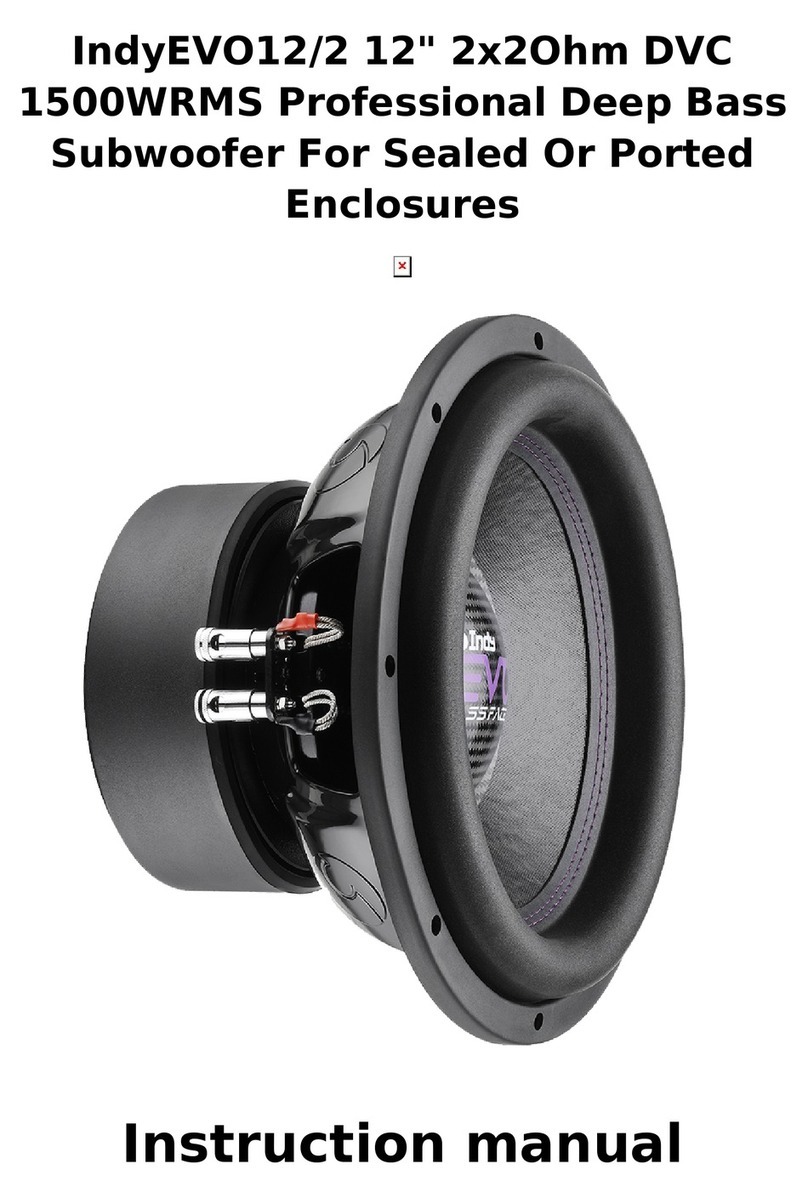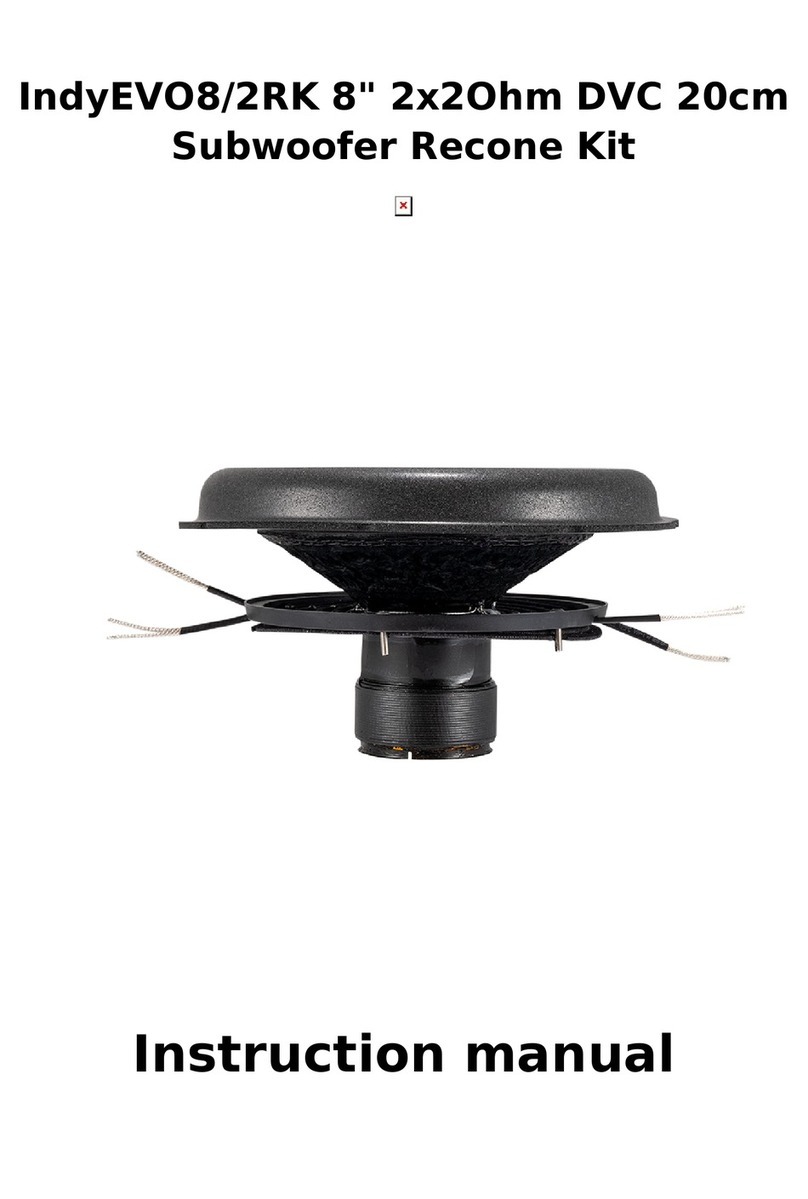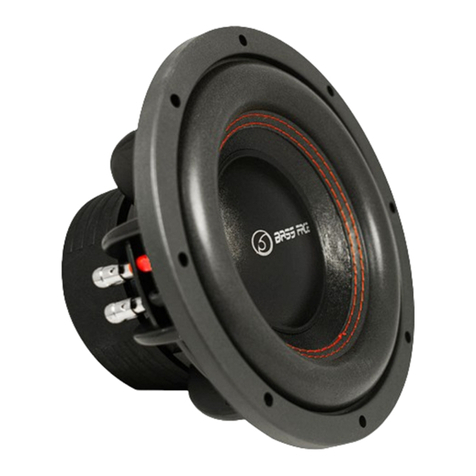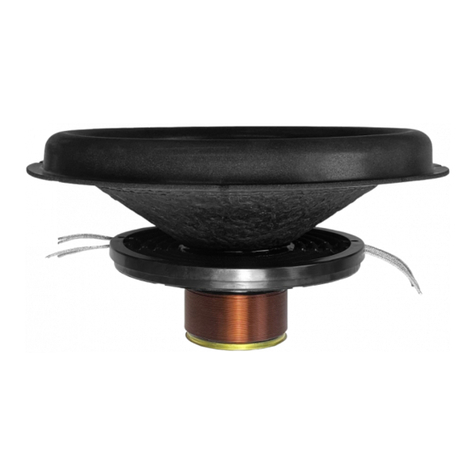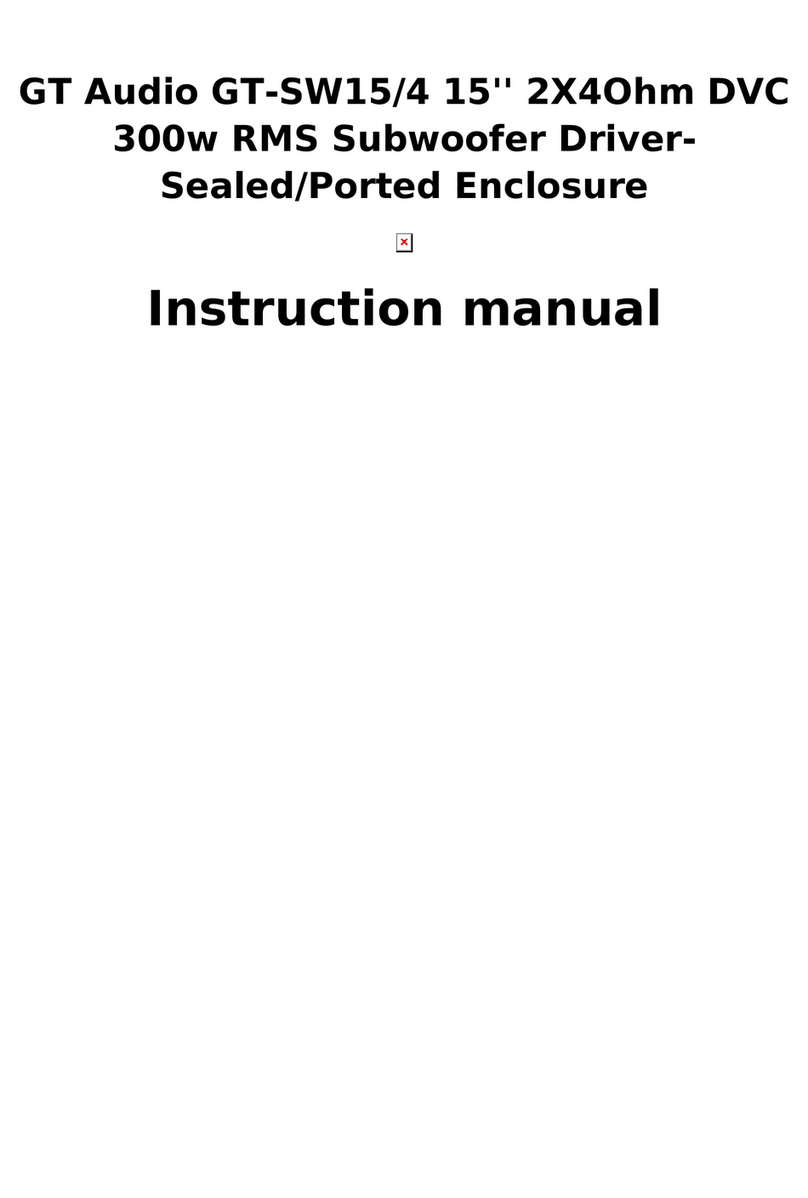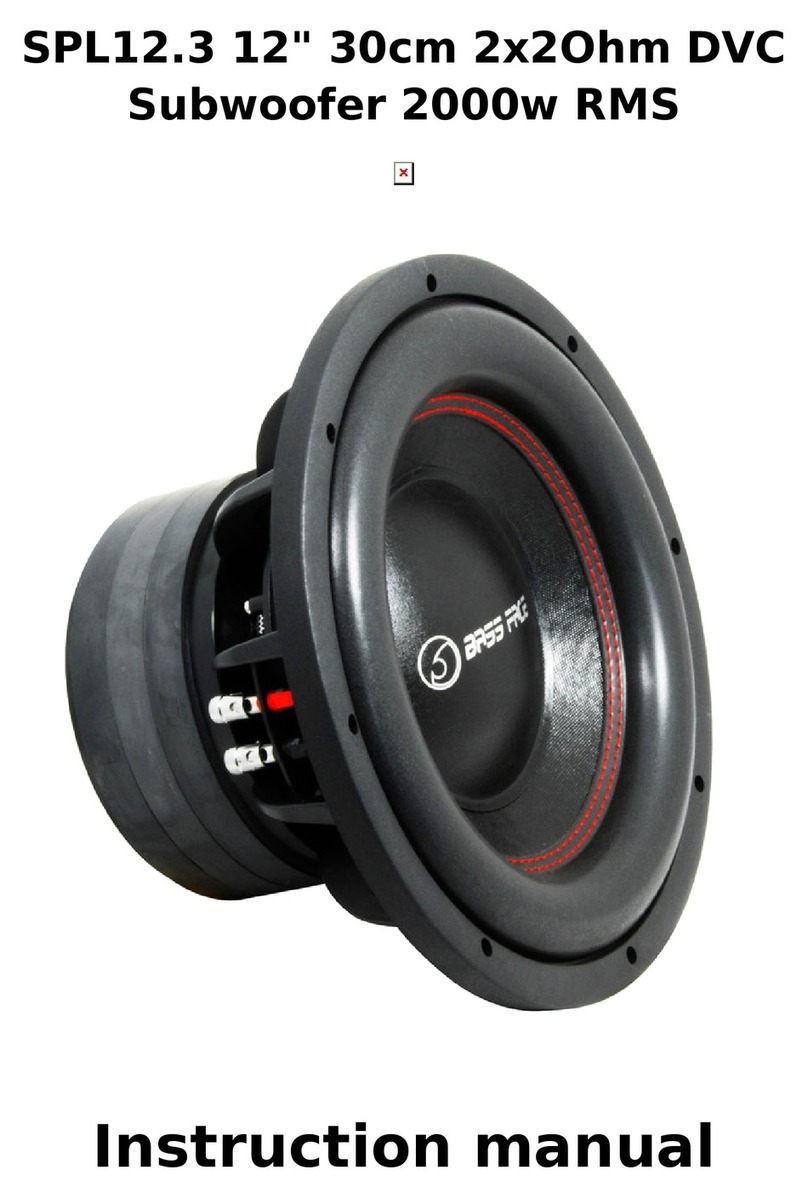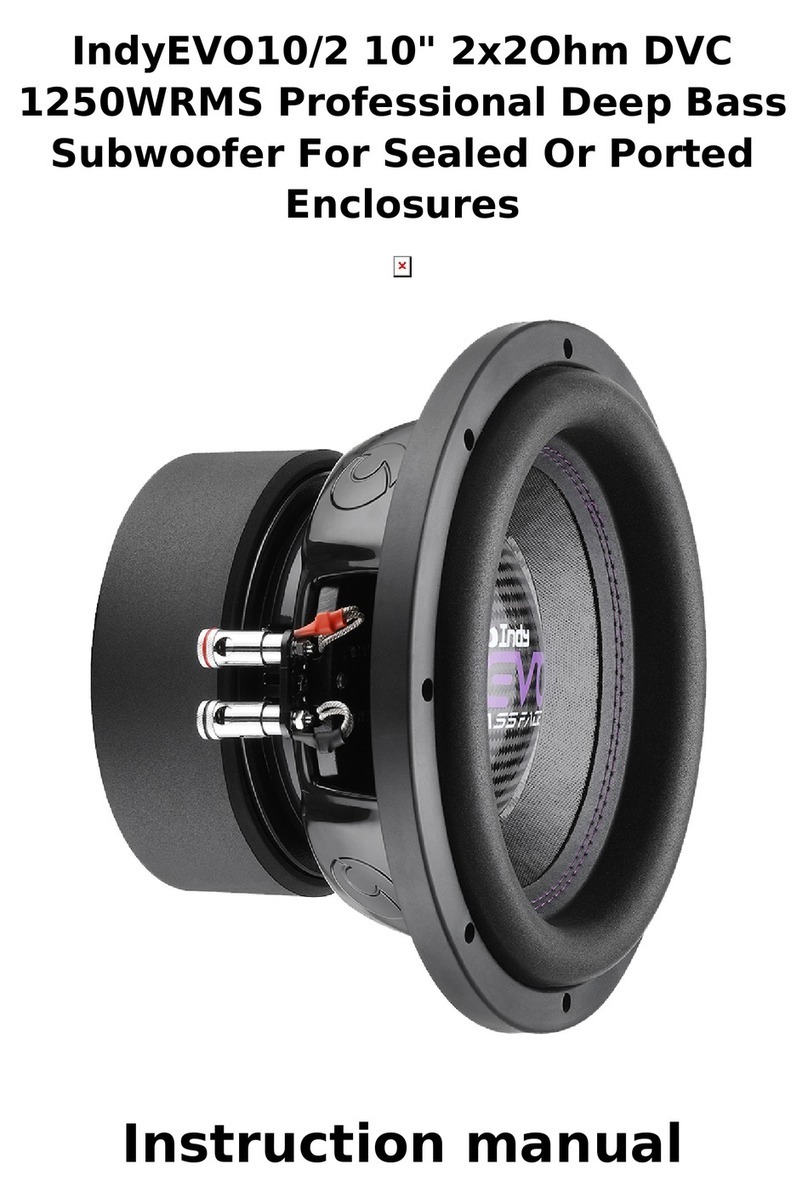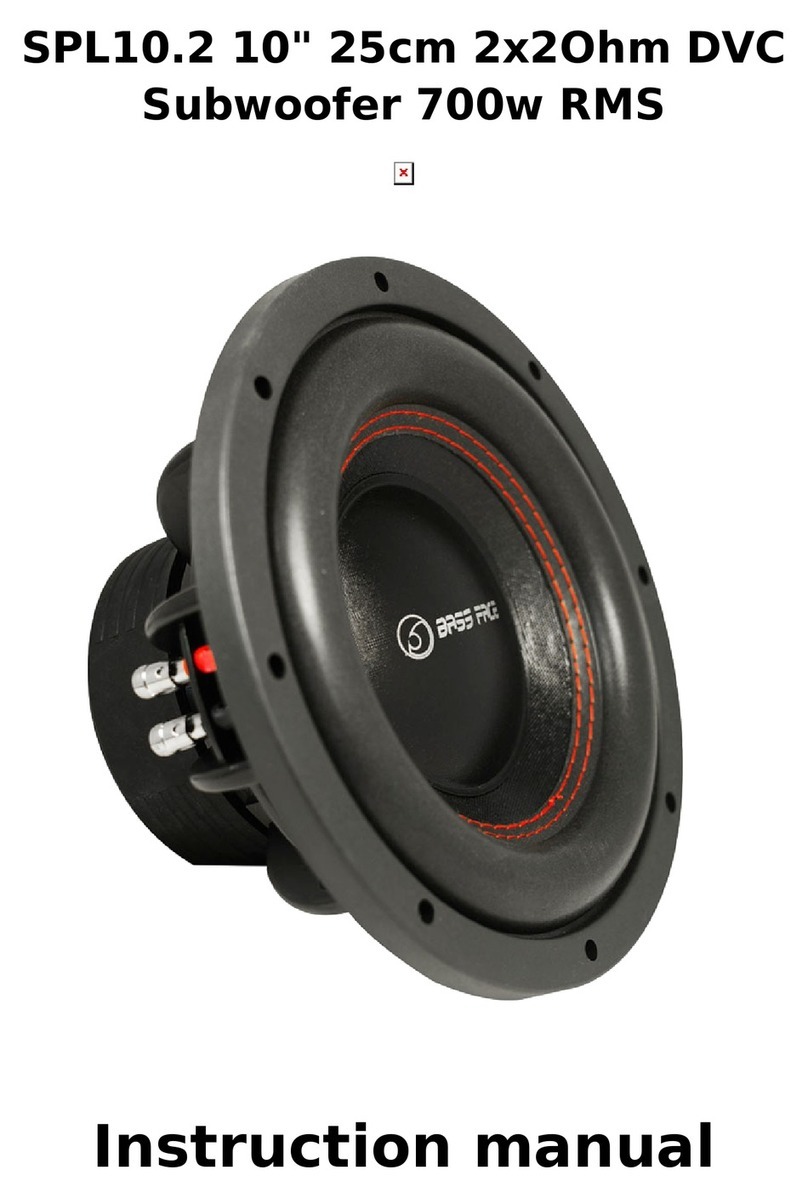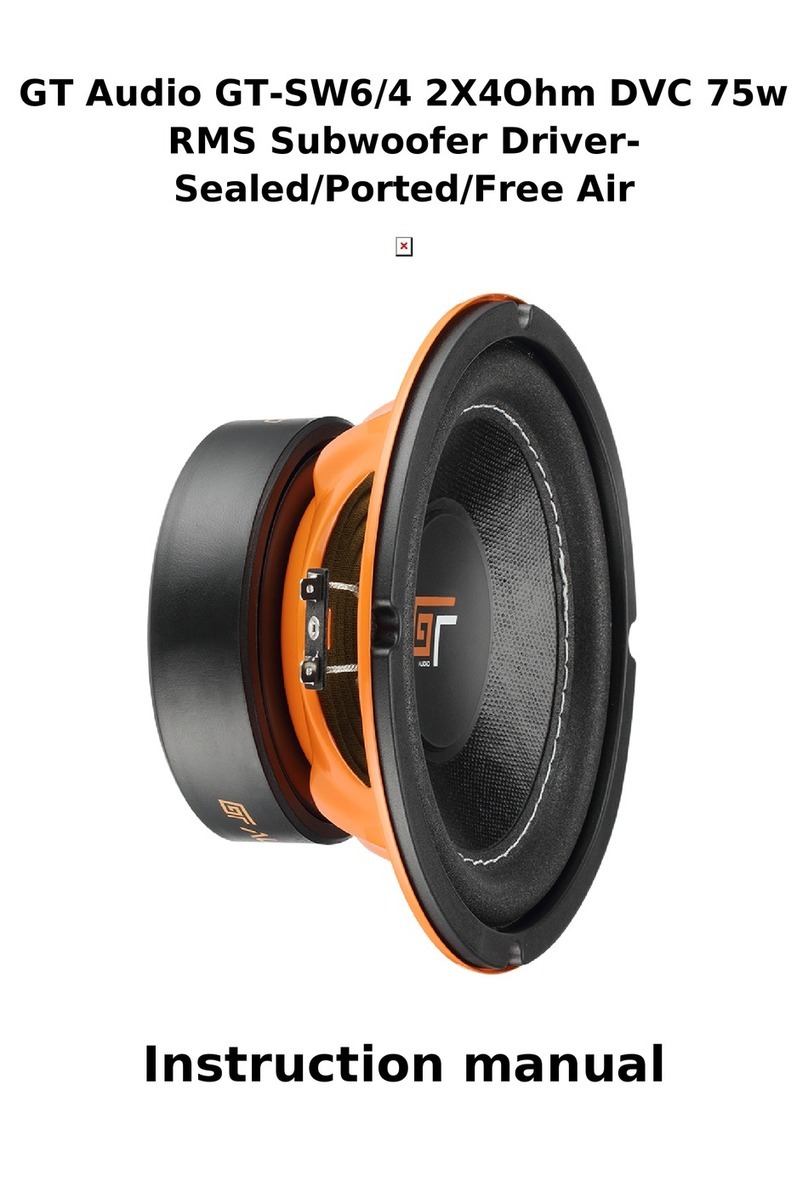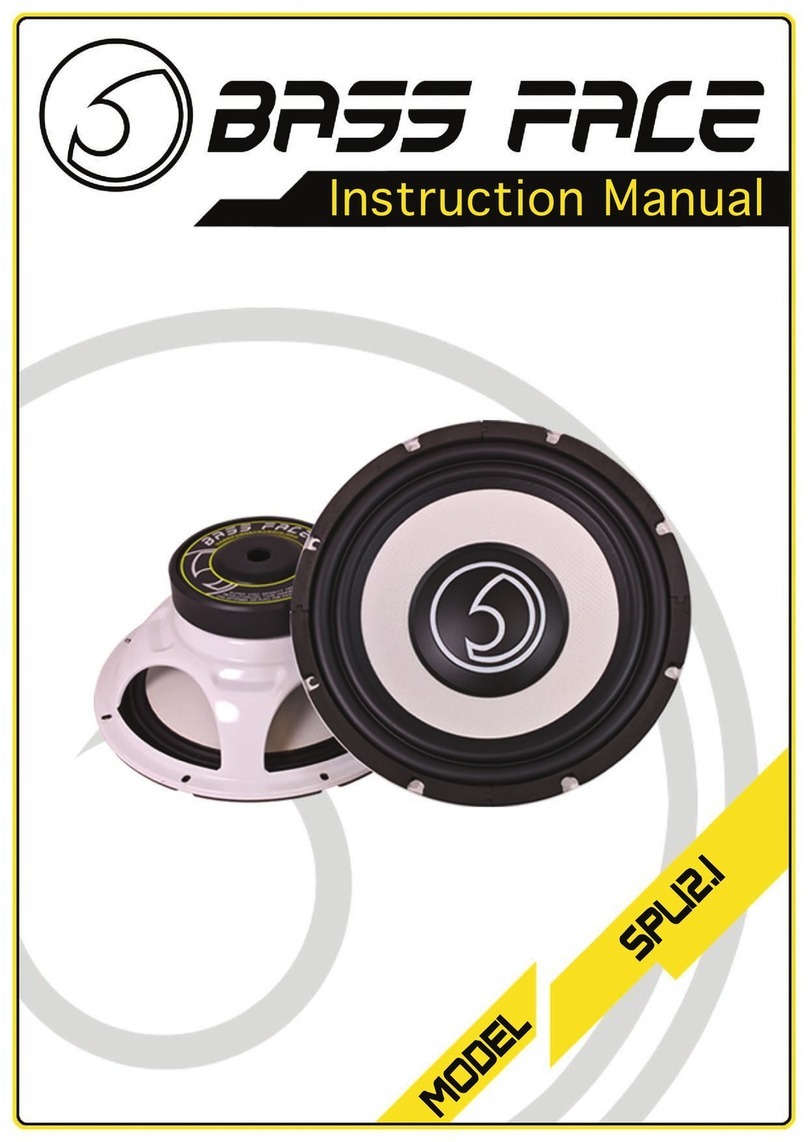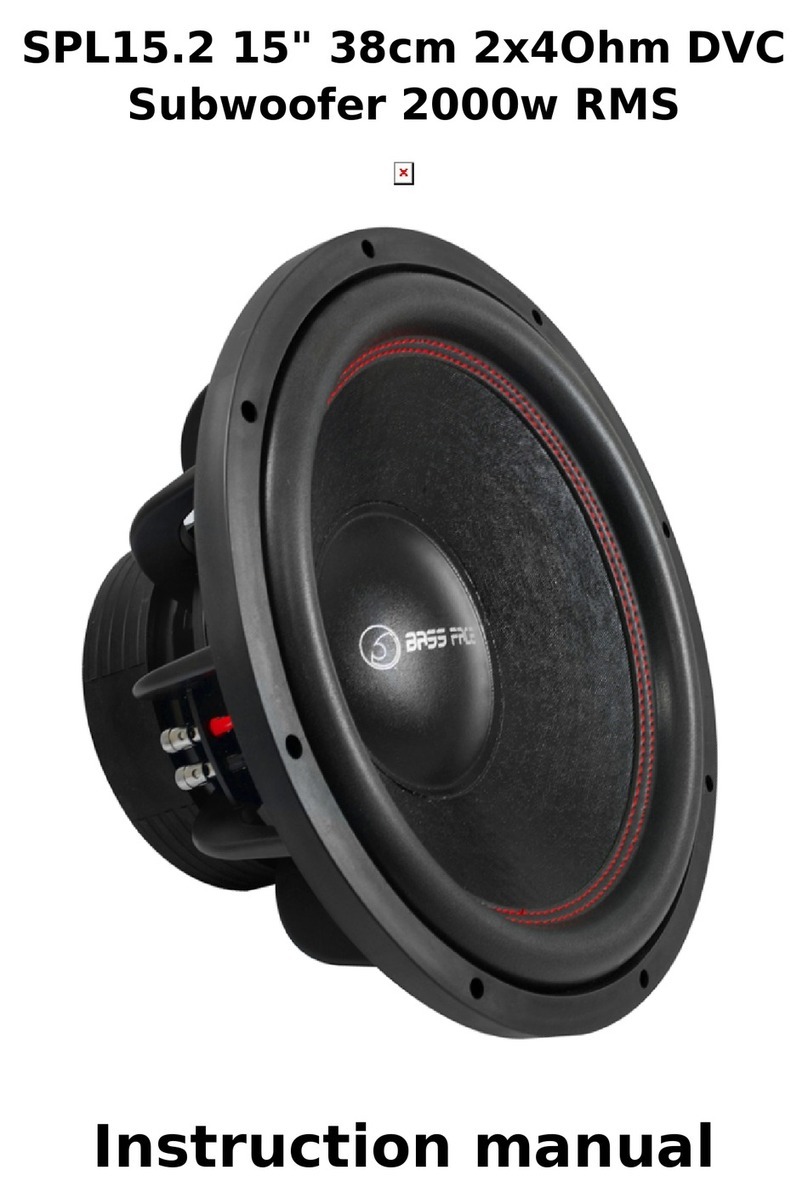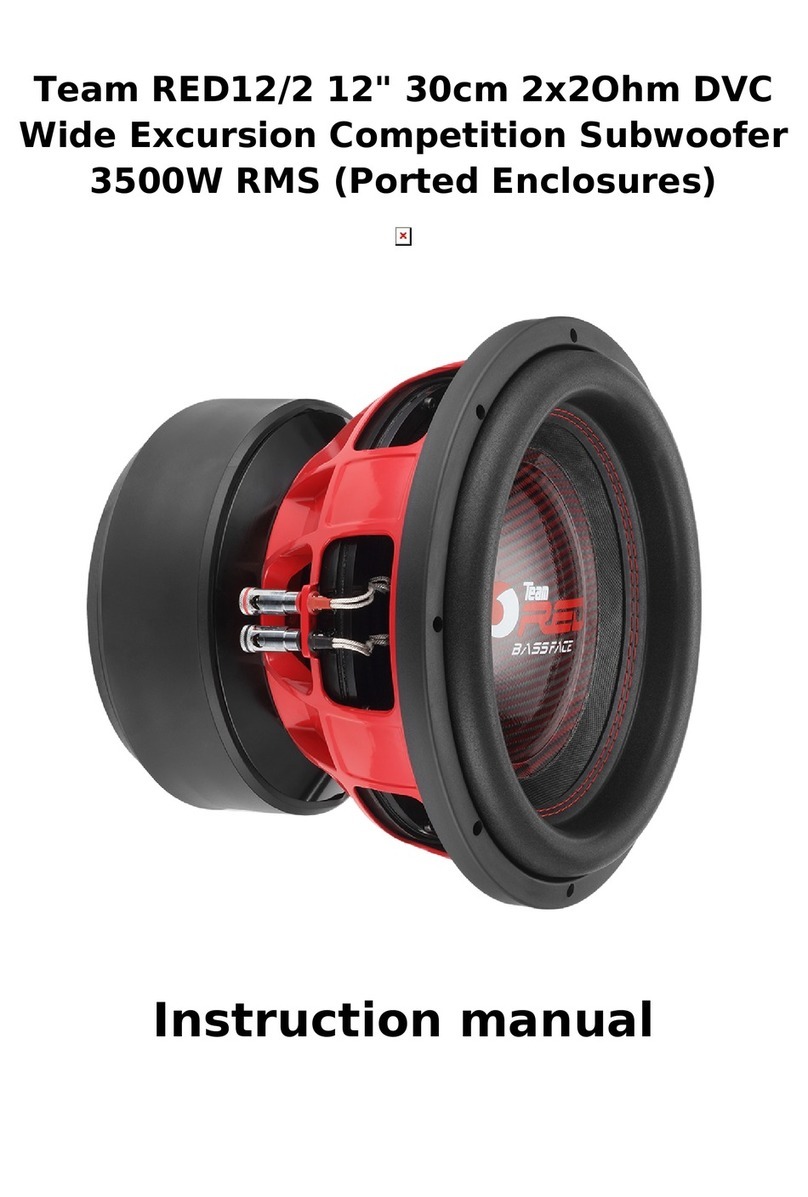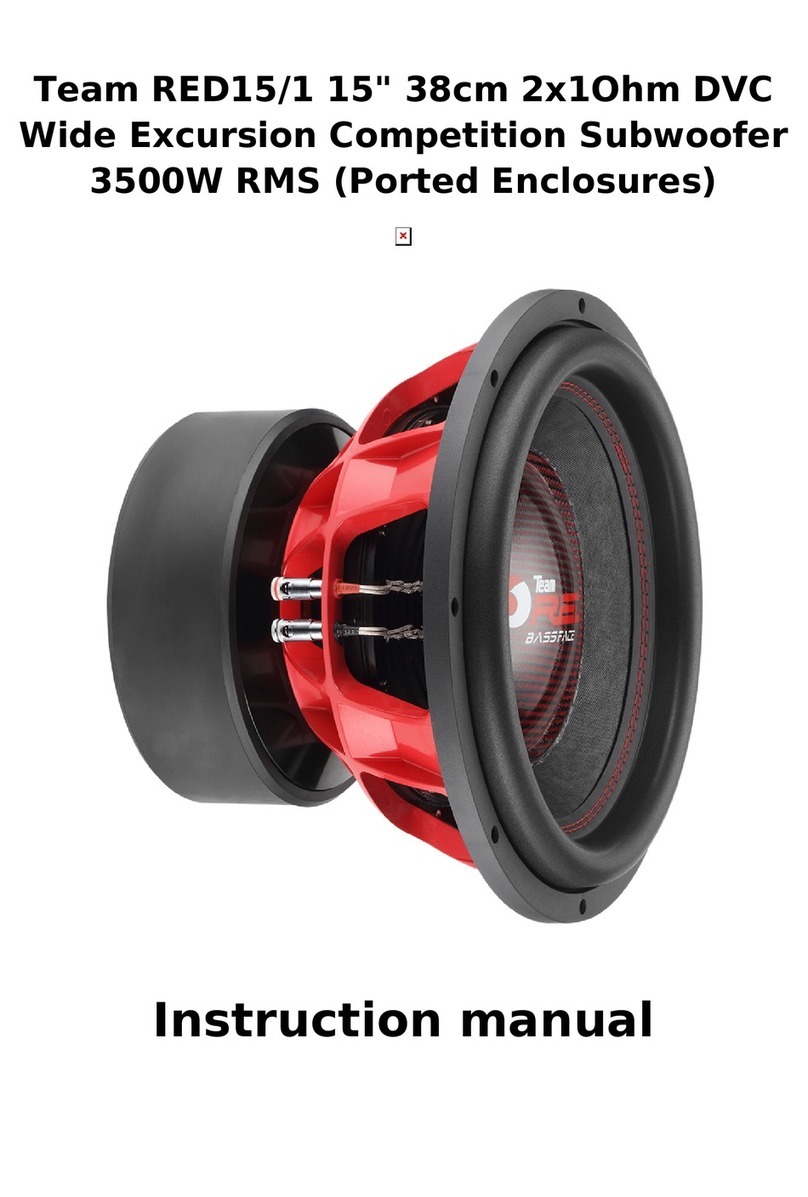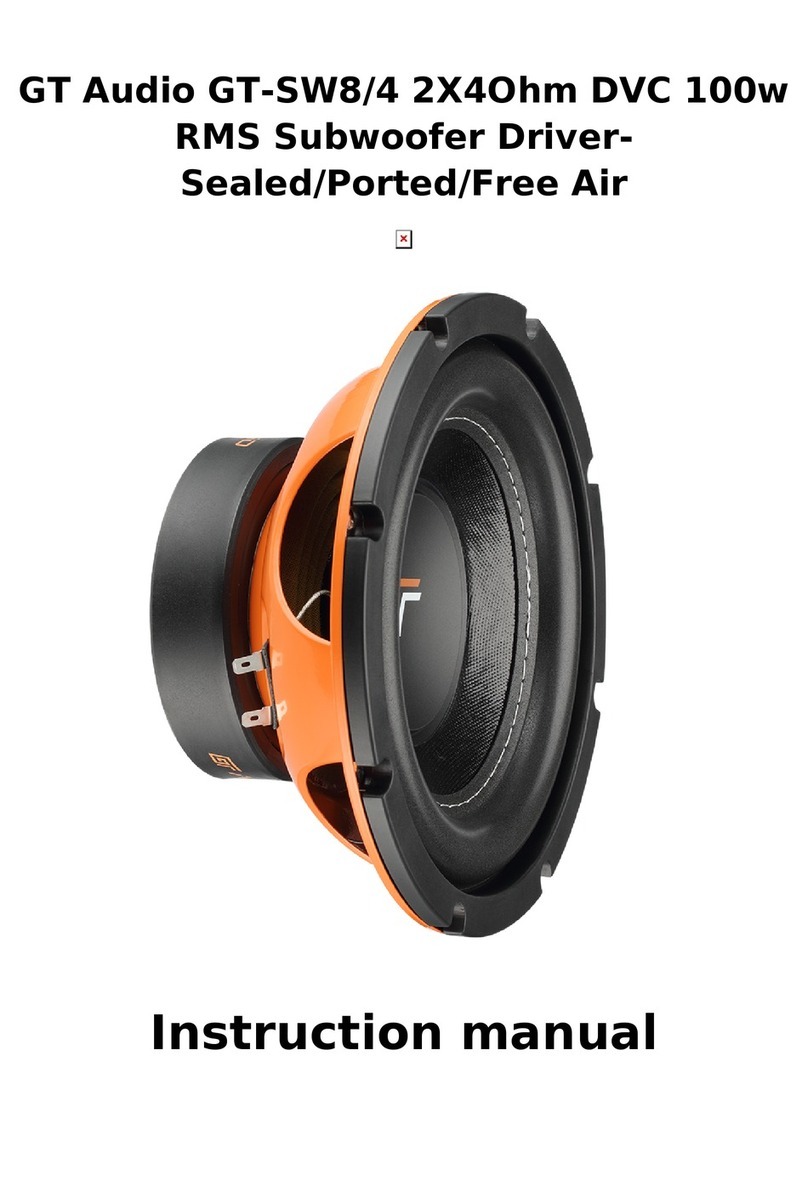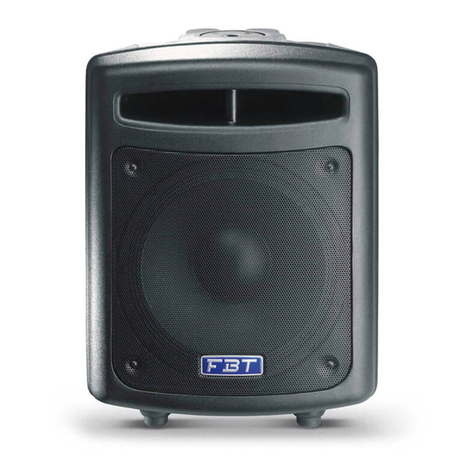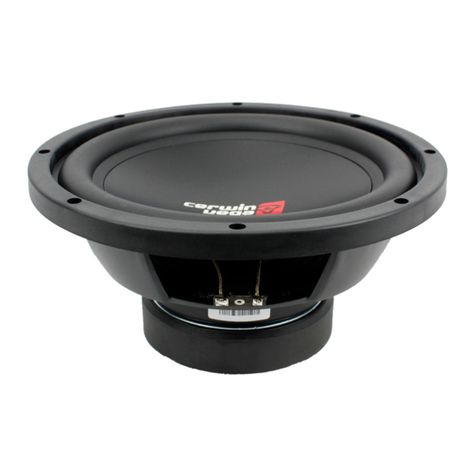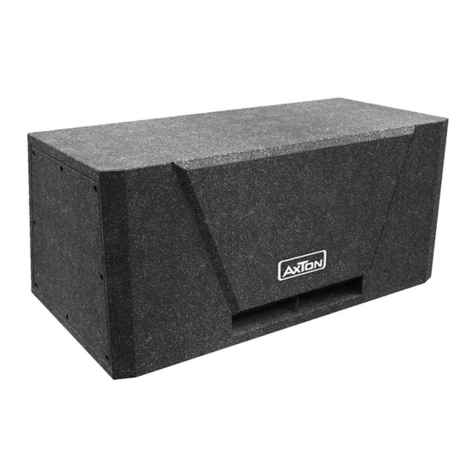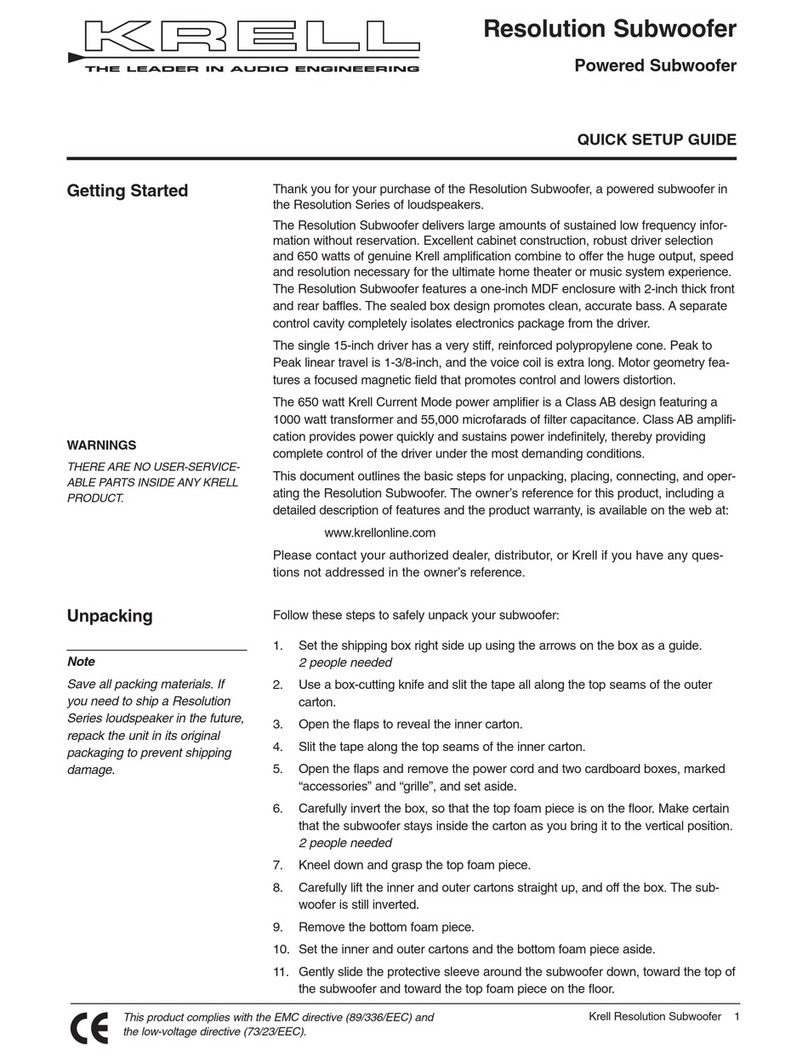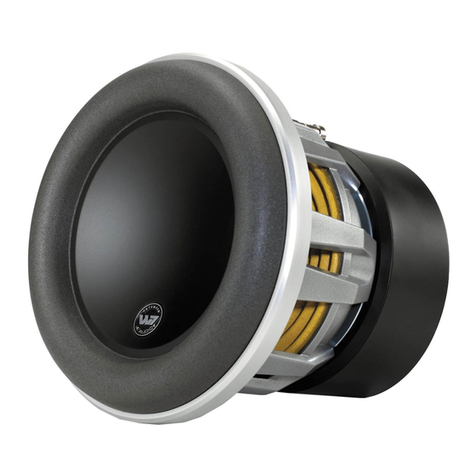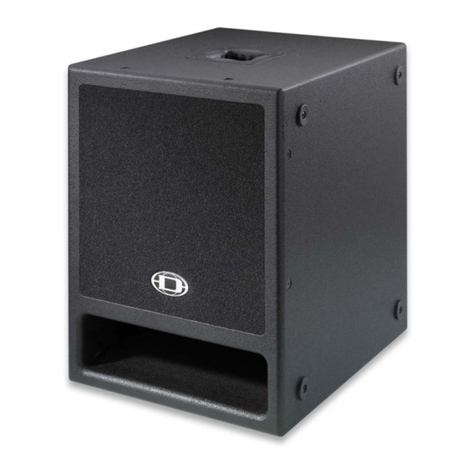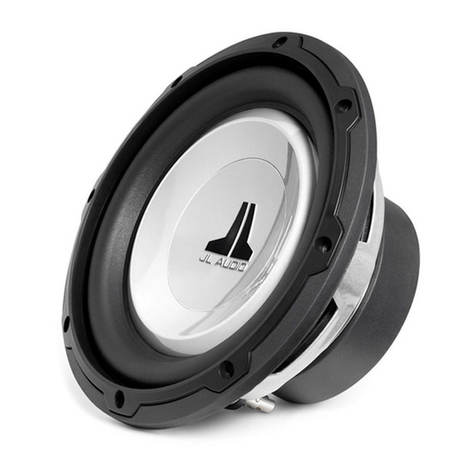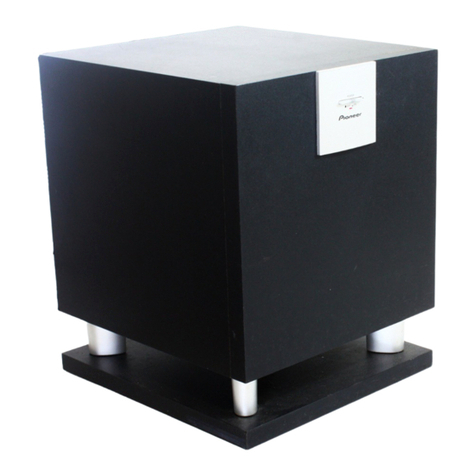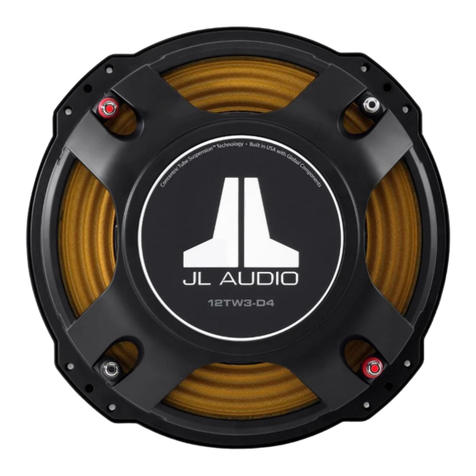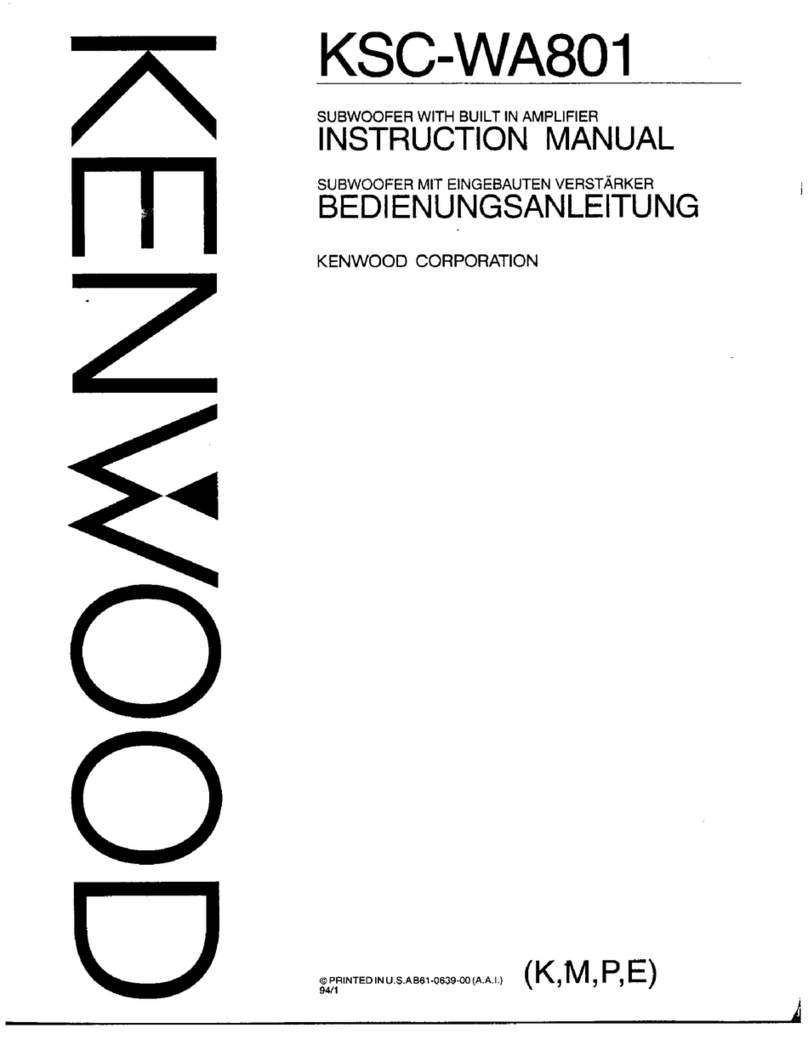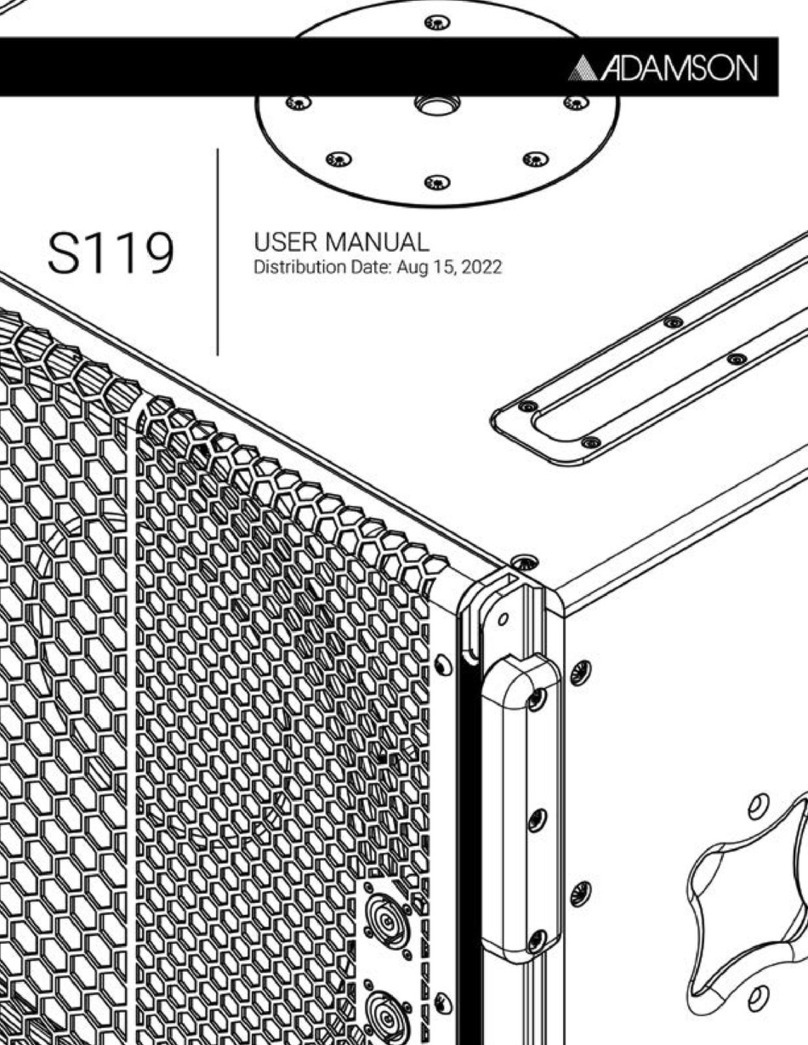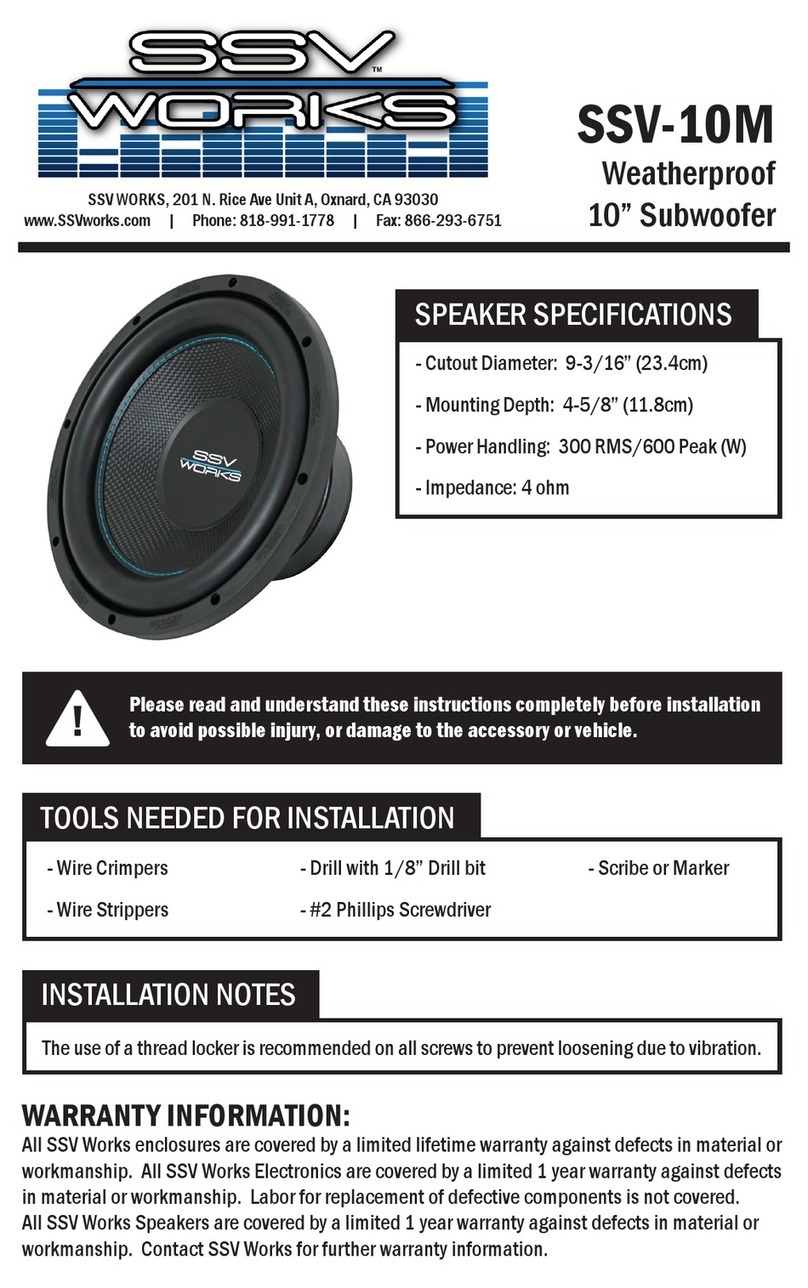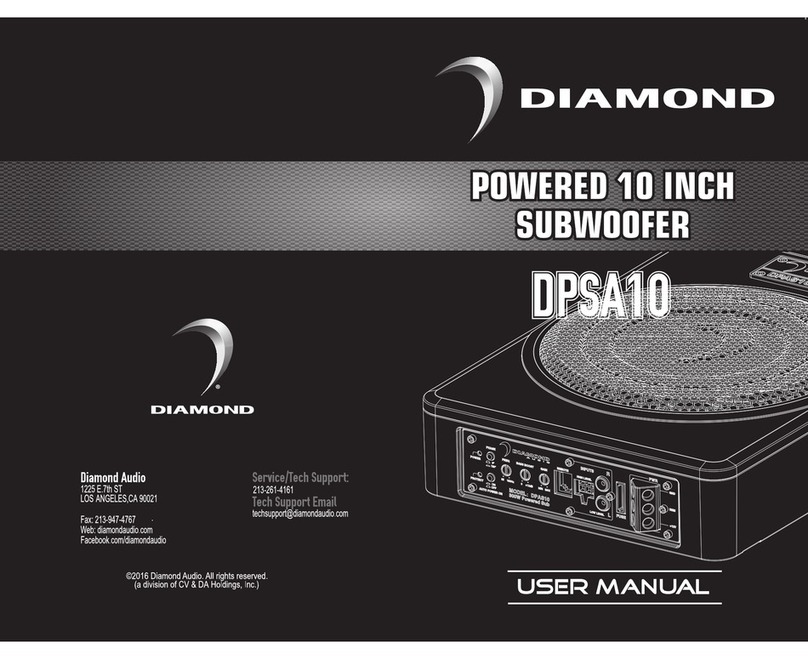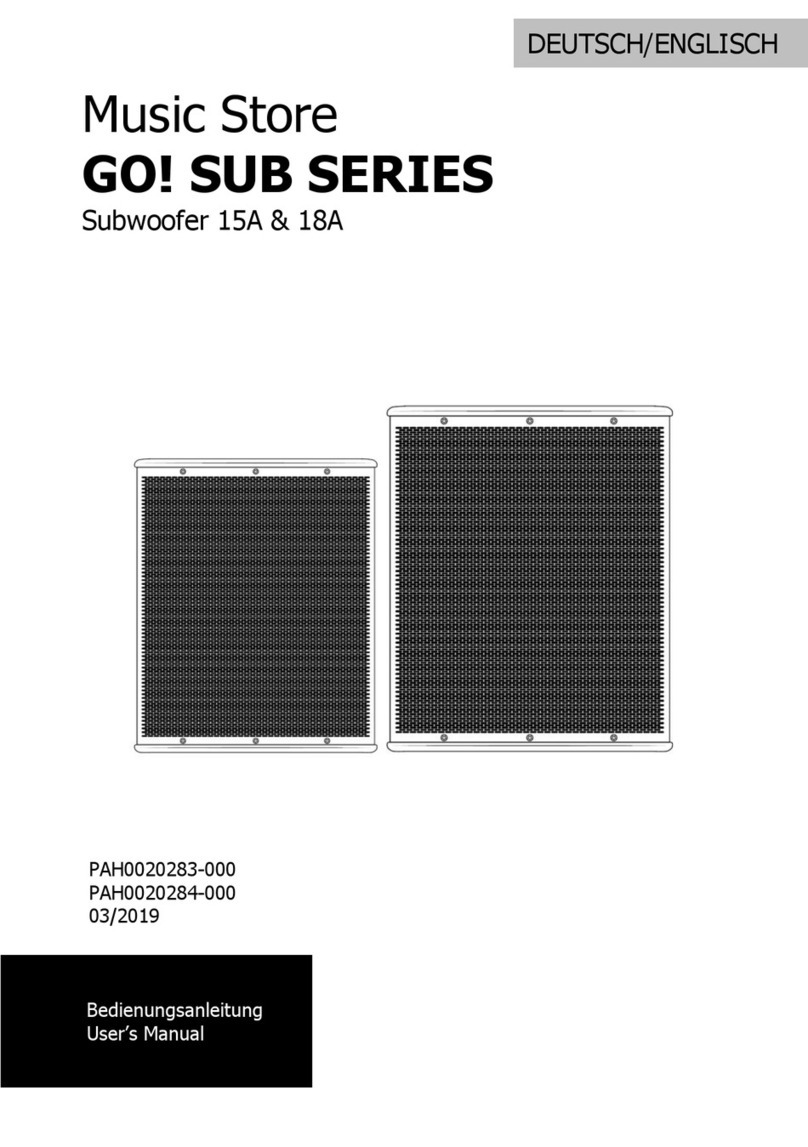
chassis of the speaker is tightly mounted and perfectly flat.
We strongly advise that you consider sound proofing the car at least around the speakers
themselves to ensure that the sound produced does not get lost in the vibrations created in
the panel. This will allow your speaker to be more rigid, giving you the best sound quality
and most output possible.
When installing sound proofing it normally helps to warm the material before use. Try to
double up the layers close to the speaker itself. You are trying to increase the weight of the
panel, lower the resonance and give the speaker something solid to kick against.
When you install the amplification please ensure that you maintain the same phasing setup
throughout your installation. So it’s either “stripe to positive” or “stripe to negative” right
the way through.
When it comes to setting up your system for sound, please remember that the single most
common cause of speaker failure is distortion. And the single most common cause of
distortion is an amplifier set at too high a level.
We do recommend the use of an external amplifier to drive our midbass and midrange
speakers. If you are going to power your new speakers off your head unit then please
remember that head unit manufacturers insist on producing products that actually distort
at about three quarters the way up their volume scale. If you add a little bass to the
settings this critical point can be as low as half the way up the volume level! The result of
this is that the owner of the system blames the speaker for the distortion. The comment is
usually “the speakers are not powerful enough to take the sound.” In reality, you need to
ensure that you play the system within the scope of the capability of the amp you are
using. If this is a simple head unit then consider adding a subwoofer if you need more bass
– or add an amplifier to the speaker outputs if you need to drive your new speakers harder.
Remember that it’s easy to burn out speakers with distortion and this isn’t part of the
warranty.
With your Bassface speakers you are going to experience a much finer tonal balance and a
superb stereo experience. What you are not going to do is to make your amplifier or head
unit more powerful than it already its, or to re-write the rules of physics and create sub
bass out of a speaker that is not designed to do that.
When you look to tune the crossover frequency we would advise that you start with around
a 5Khz high pass roll off to the tweeters. This is an excellent starting point. Depending on
the location of the tweeters and the type of the tweeters you may be able to run a lower
crossover point, which will enable more of the sound to come out of the tweeters and often
this creates a better sound image, as well as tightening up the midbass.
If you have the facility available on your head unit or amplifier it will be beneficial in most
cases to also set a high pass crossover point, to limit the amount of bass that is being fed in
to your speakers. We would recommend the use of a 60, 80 or 100Hz crossover in most
situations.
For advanced installers where there is no room to work it is possible to experiment using
mid woofers to function as compact enclosure subwoofers. To get the best performance in
these circumstances you would look to run them in a sealed enclosure of approximately 0.5
